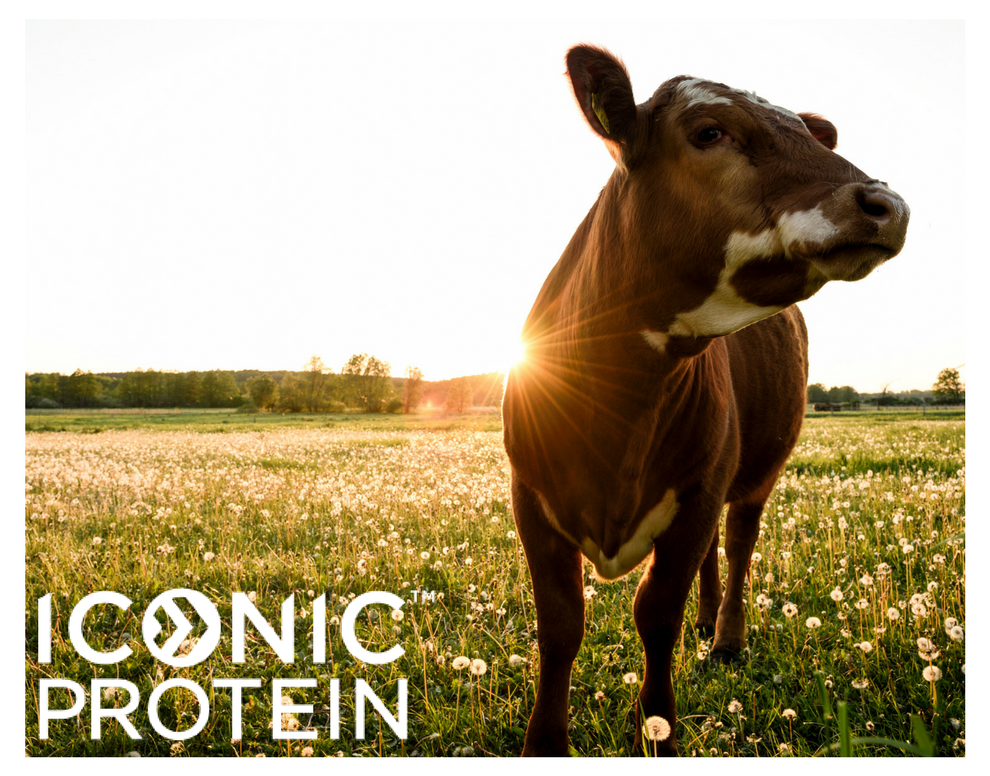What’s the Difference Between Grass-Fed, Conventional and Organic Dairy?
Published:
By Team ICONIC
Chances are, your local grocery store’s cooler is packed bottle-to-bottle with a variety of milk options ranging from conventionally-farmed to organic and grass-fed. While it may be difficult to tell the difference from a quick scan of the label, there are a few important things to keep in mind about both the nutritional quality of the milk and ways the cows were raised and managed.
Conventional Milk Cows
Most conventional milk is from large industrial providers that primarily keep their cows inside barns, either in indoor pens, feedlots or tethered to individual stalls, and eat a non-organic feed that contains grain, corn, soy and food by-products. This feed often includes genetically modified ingredients, primarily corn and soy. In some instances, these cows may be given growth hormone or antibiotics in order to make them grow larger and produce more milk.
Organic Milk Cows
Dairy cattle that produce organic milk are given some access to pasture and at least 30 percent of their diet must come from grass. When they aren’t feeding at pasture, these cows are given an organic feed that is free from antibiotics, hormones, pesticides and GMOs. They likely have more access to pasture and larger living quarters.
Grass-Fed Milk Cows
Grass-fed cattle feed on pasture throughout the year, unless facing inclement weather, when they’re fed cut grasses inside a barn. At ICONIC, we source our dairy from co-op farmers in New Zealand, who certify that our cows are at least 85% grass-fed, though reports show that our cows were served a diet of approx. 93% grass in 2017. Our cows also rotate on pasture, preventing the depletion of resources on one area of land. These cows essentially function as part of a larger ecosystem, allowing the maintenance of healthy levels of natural flora and fauna in those grasslands year- round. This is in stark contrast to the supply chain of conventional cattle rising. In this case, grassland is converted to single-use crops such as soy and corn, or cattle feedlots that are unable to support carbon sequestration.
In addition to the environmental benefits, milk from grass-fed cows has been shown to contain higher levels of an essential fatty acid called alpha-linolenic acid (ALA), an omega-3 fat that reduces inflammation in the body and has been tied to a lower risk of heart disease, stroke and type 2 diabetes. Milk from grass-fed cows has also been shown to have up to five times more conjugated linoleic acid (CLA) than conventional milk, as well as Vitamin E, selenium and beta-carotene—antioxidants that protect cells from free-radical damage.
Research has also shown that grass-fed, pasture-raised cows tend to be happier, which also has an impact on both the nutritional quality and amount of milk that cows produce.
Grass-Fed Goodness
At ICONIC, the choice is clear—we believe in the importance of grass-fed dairy, not just for the health benefits, but for the environmental impact. That’s why, as a company, we’re committed to grass-fed goodness and making it as affordable, accessible and convenient as possible for our customers.